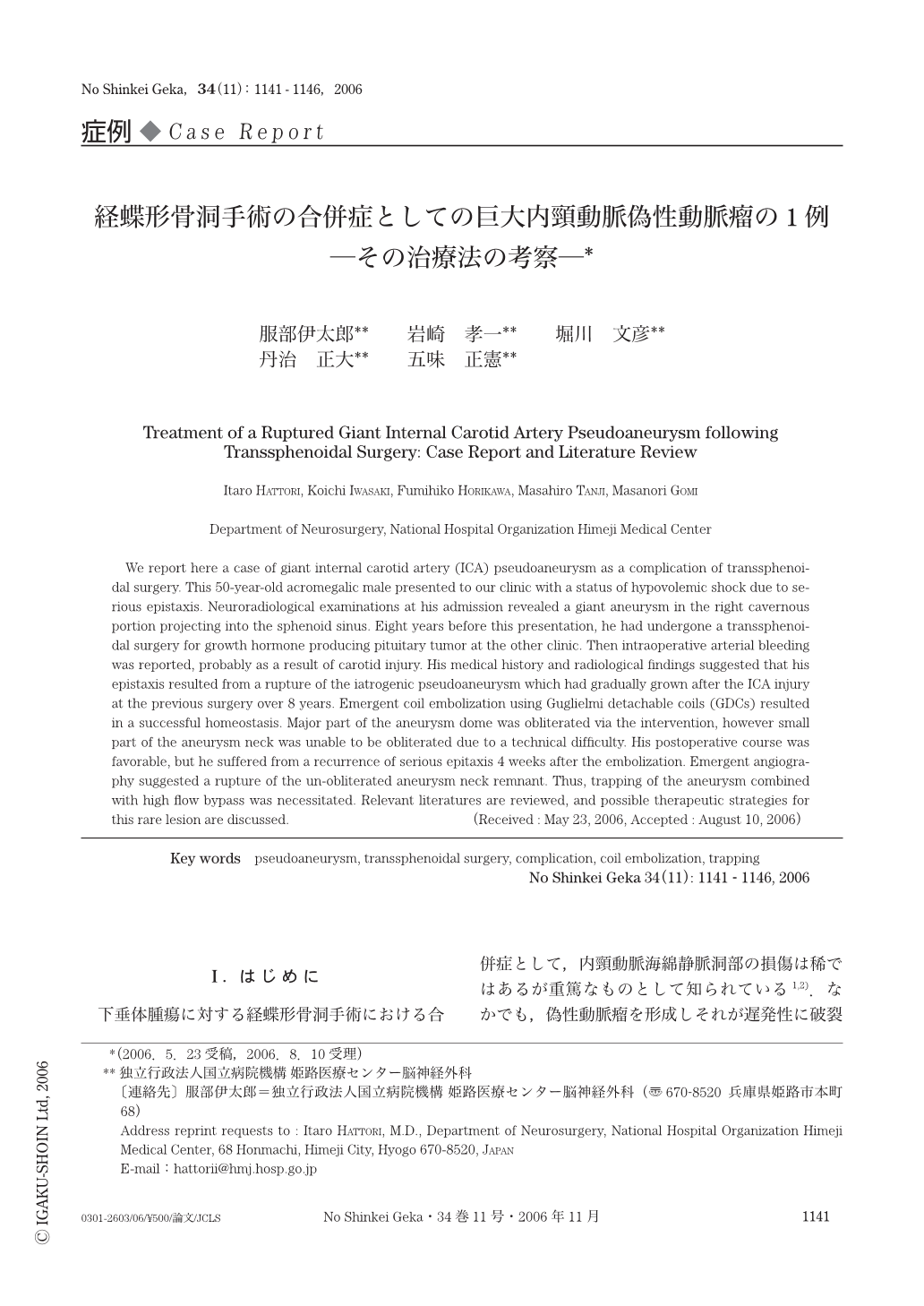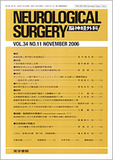Japanese
English
- 有料閲覧
- Abstract 文献概要
- 1ページ目 Look Inside
- 参考文献 Reference
Ⅰ.は じ め に
下垂体腫瘍に対する経蝶形骨洞手術における合併症として,内頸動脈海綿静脈洞部の損傷は稀ではあるが重篤なものとして知られている1,2).なかでも,偽性動脈瘤を形成しそれが遅発性に破裂して動脈性鼻出血を来す例は,致命的な合併症として報告が散見されるが,一般にその治療は極めて困難であり有効な治療法に関して統一した意見は得られていない3-10).われわれは下垂体腺腫の経蝶形骨洞手術後8年目に,多量の鼻出血にて発症した内頸動脈偽性動脈瘤の症例を経験した.緊急血管内治療により動脈瘤のコイル塞栓術を施行したが再破裂したため,動脈瘤のトラッピングを余儀なくされた.この経験に基づき本疾患の治療法につき文献的考察を加え報告する.
We report here a case of giant internal carotid artery (ICA) pseudoaneurysm as a complication of transsphenoidal surgery. This 50-year-old acromegalic male presented to our clinic with a status of hypovolemic shock due to serious epistaxis. Neuroradiological examinations at his admission revealed a giant aneurysm in the right cavernous portion projecting into the sphenoid sinus. Eight years before this presentation,he had undergone a transsphenoidal surgery for growth hormone producing pituitary tumor at the other clinic. Then intraoperative arterial bleeding was reported,probably as a result of carotid injury. His medical history and radiological findings suggested that his epistaxis resulted from a rupture of the iatrogenic pseudoaneurysm which had gradually grown after the ICA injury at the previous surgery over 8 years. Emergent coil embolization using Guglielmi detachable coils (GDCs) resulted in a successful homeostasis. Major part of the aneurysm dome was obliterated via the intervention,however small part of the aneurysm neck was unable to be obliterated due to a technical difficulty. His postoperative course was favorable,but he suffered from a recurrence of serious epitaxis 4 weeks after the embolization. Emergent angiography suggested a rupture of the un-obliterated aneurysm neck remnant. Thus,trapping of the aneurysm combined with high flow bypass was necessitated. Relevant literatures are reviewed,and possible therapeutic strategies for this rare lesion are discussed.

Copyright © 2006, Igaku-Shoin Ltd. All rights reserved.


